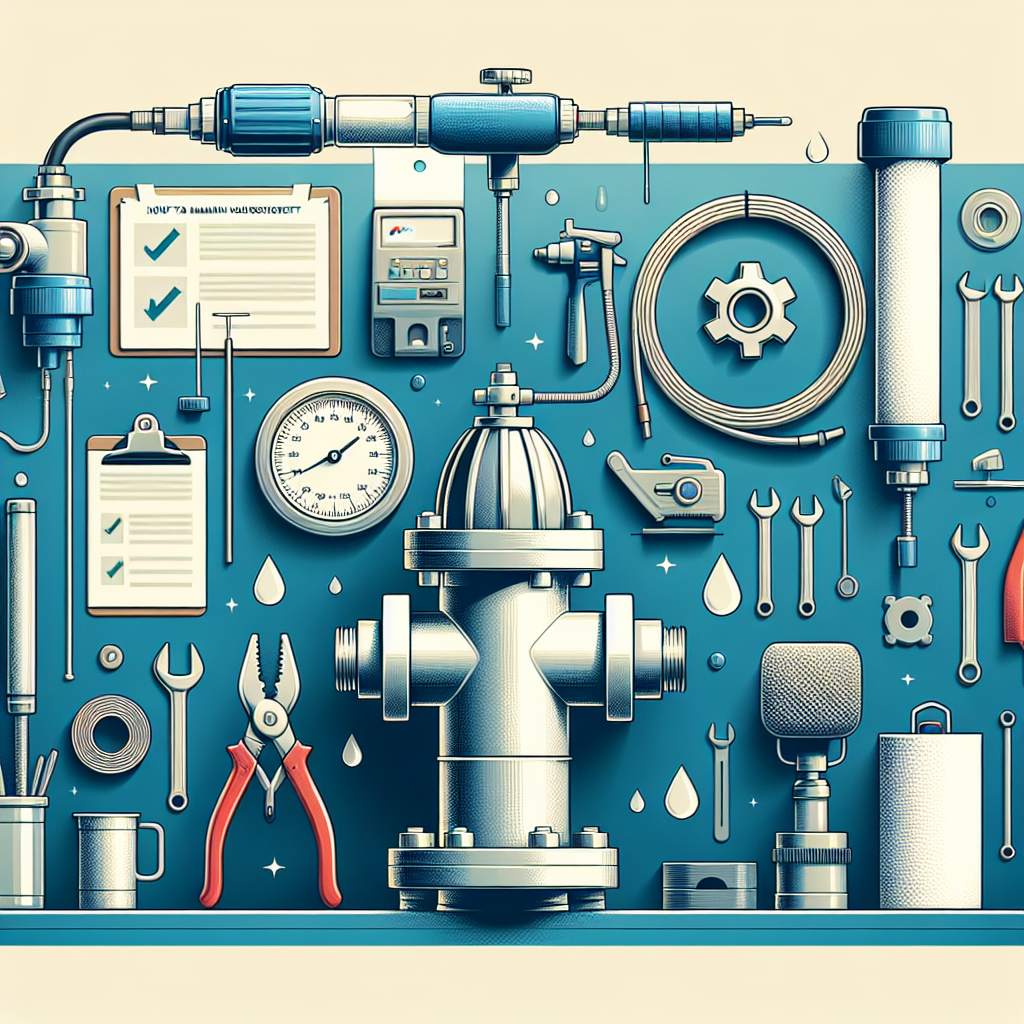Backflow preventers play a critical role in protecting our drinking water supply from contamination. These mechanical devices help ensure that water flows in one direction, preventing harmful contaminants from re-entering the clean water system. If you own a property with a backflow preventer, understanding how to inspect and maintain it is essential for your health and safety. In this article, we’ll guide you through a DIY approach to inspecting and maintaining your backflow preventer.
What is a Backflow Preventer?
Before diving into maintenance, let’s clarify what a backflow preventer is. Essentially, it’s a valve that stops water from flowing backwards into your plumbing system. There are different types of backflow preventers, including atmospheric vacuum breakers, pressure vacuum breakers, and double-check valve assemblies, each serving a specific purpose. Knowing your device type can significantly aid in its inspection and maintenance.
Why Regular Maintenance is Essential
Neglecting your backflow preventer can lead to malfunction, creating serious health risks for you and your community. Contaminants can easily enter your home’s drinking water, posing health threats from bacteria, chemicals, and other pollutants. Regular inspection and maintenance not only ensures proper functionality but also helps you save on potential costly repairs or replacements.
Tools You’ll Need for Inspection
Before getting started, gather the following tools:
- Adjustable wrench
- Screwdriver
- Flashlight
- Bucket or towel
- Water testing kit (optional)
Having the right tools on hand will make the inspection process smoother and more efficient.
Step-by-Step Inspection Guide
1. Visual Inspection
Start with a visual examination of the backflow preventer. Look for any obvious signs of damage, leaks, or corrosion. Pay special attention to:
- Connections: Ensure all seals are tight and there are no visible leaks.
- Hoses: Check for cracks or deterioration.
- Valves: Examine for signs of wear and tear.
2. Test the Valve
To test the backflow preventer, turn off the water supply and remove the test ports. Use your adjustable wrench to unscrew the test cocks. If there is any water draining out, it could indicate a malfunction that needs immediate attention. Ensure the valve operates smoothly without any obstructions.
3. Remove and Clean
If you notice significant dirt or grime build-up, consider removing the backflow preventer for a more thorough clean. Always consult your device’s manual for removal instructions. Once off, clean it with warm, soapy water and a soft cloth. Rinse it well before reinstallation.
4. Check for Obstructions
Inside the backflow preventer, look for any clogs or debris. This may require you to take the device apart completely. If you’re not comfortable doing this, it may be time to call in a professional.
5. Reinstall and Test
Once everything is clean and free of debris, reinstall the backflow preventer carefully. Open the water supply and check for leaks as you do so. Using your water testing kit, test the water for contaminants. If you detect any issues, seek professional help immediately.
Seasonal Maintenance Tips
Just like your car or home, seasonal maintenance is essential for keeping your backflow preventer in top shape:
- Spring: Inspect after winter for freeze damage.
- Summer: Check for scale buildup and ensure the device operates well under high demand.
- Fall: Ensure everything is in good working condition before winter sets in.
When to Call in the Professionals
While DIY maintenance can handle many aspects of backflow preventer care, don’t hesitate to call in a licensed plumber or backflow technician for a more thorough inspection or repairs. They can perform the necessary tests and provide certification that the device is functioning properly according to local regulations.
Conclusion
Regular inspection and maintenance of your backflow preventer are vital for the safety of your drinking water supply. By following these DIY steps, you can ensure your device is functioning correctly and protect your family from potential health risks. Don’t forget to schedule annual professional inspections to keep everything in check. Now, take charge of your property’s water safety and enjoy peace of mind knowing you’ve done your part!
By optimizing this article with relevant subheadings, easy-to-understand language, and actionable steps, we not only provide valuable information but also engage with readers effectively.


